
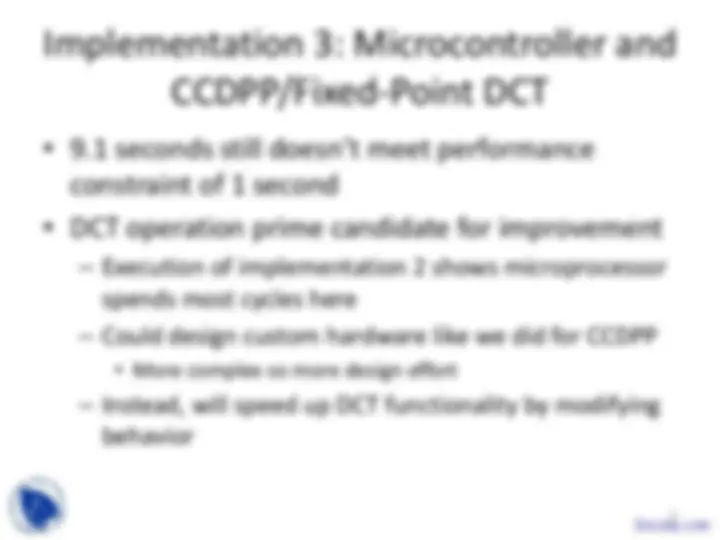
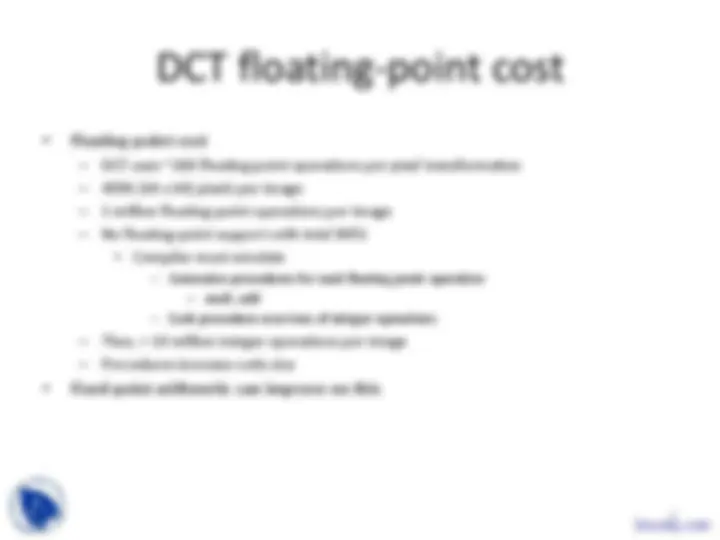
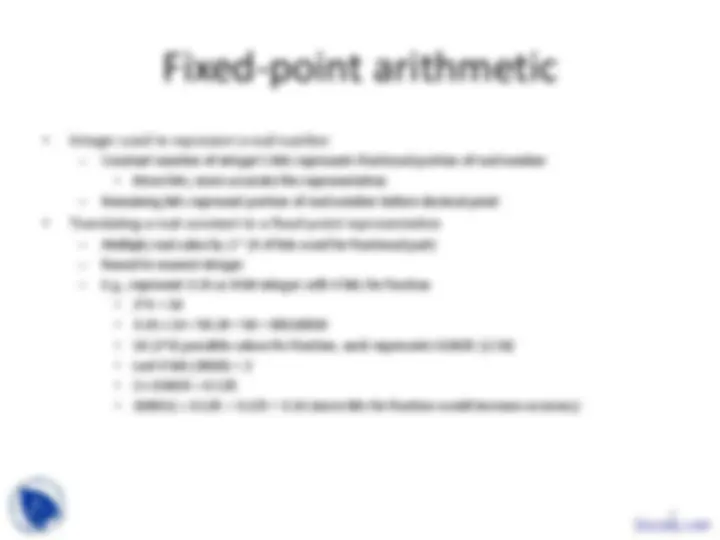
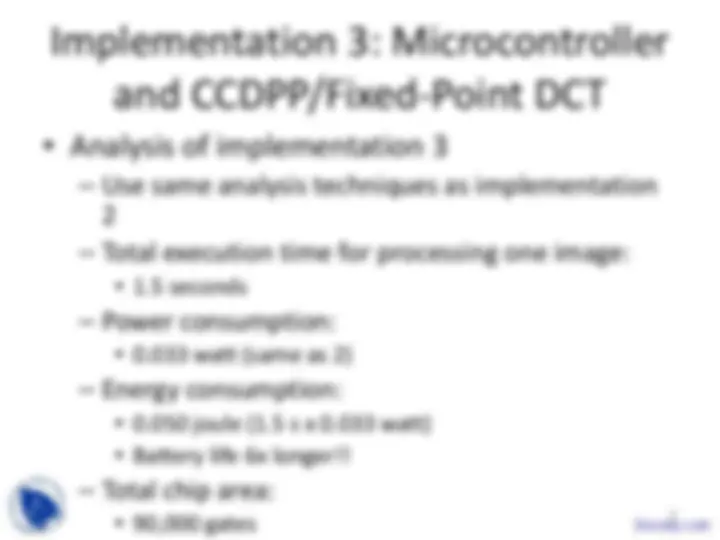
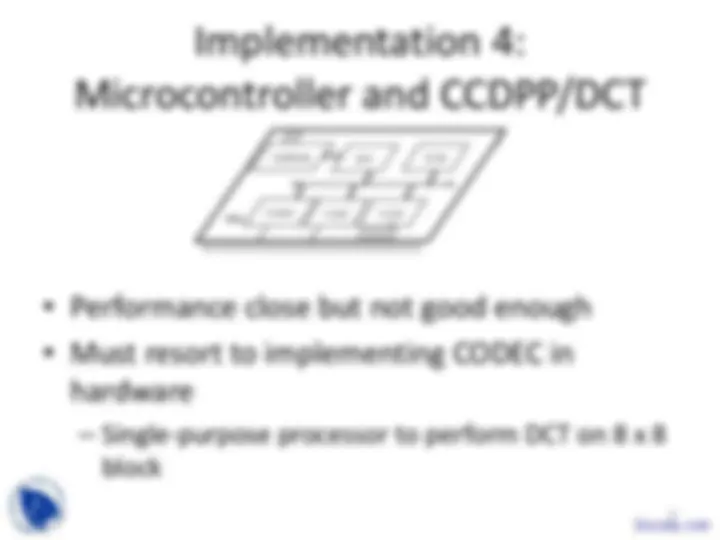
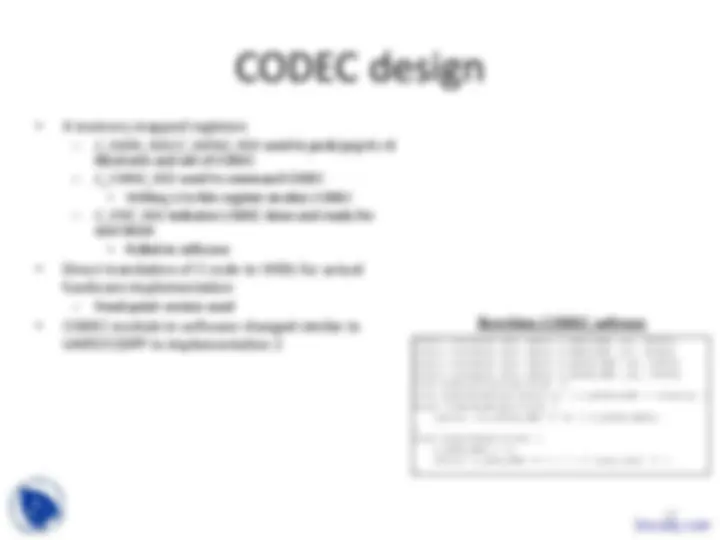
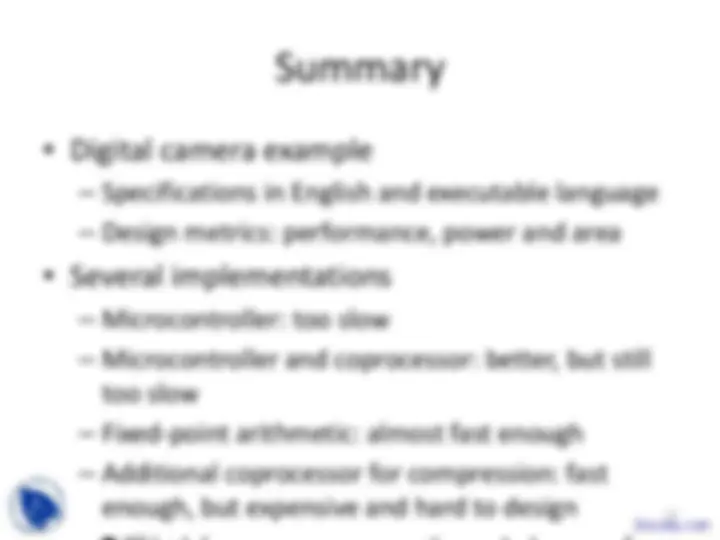


Study with the several resources on Docsity

Earn points by helping other students or get them with a premium plan


Prepare for your exams
Study with the several resources on Docsity

Earn points to download
Earn points by helping other students or get them with a premium plan
Community
Ask the community for help and clear up your study doubts
Discover the best universities in your country according to Docsity users
Free resources
Download our free guides on studying techniques, anxiety management strategies, and thesis advice from Docsity tutors
These are the Lecture Slides of Embedded System Design which includes Hardware Design, Elevator Controller, Simple Elevator Controller, Try Capturing, Unit Control, Request Resolver, Sequential Program Model, Partial English Description, System Interface etc. Key important points are: Designers Perspective, Simple Digital Camera, Requirements Specification, Four Implementations, Design, Processors, Map Functionality, Implementation, Starting Point, Low End General Purpose
Typology: Slides
1 / 13

This page cannot be seen from the preview
Don't miss anything!








» mult, add
of cosine values
void CodecDoFdct(void) { unsigned short x, y; for(x=0; x<8; x++) for(y=0; y<8; y++) outBuffer[x][y] = F(x, y, inBuffer); idx = 0; }
static const char code COS_TABLE[8][8] = { { 64, 62, 59, 53, 45, 35, 24, 12 }, { 64, 53, 24, -12, -45, -62, -59, -35 }, { 64, 35, -24, -62, -45, 12, 59, 53 }, { 64, 12, -59, -35, 45, 53, -24, -62 }, { 64, -12, -59, 35, 45, -53, -24, 62 }, { 64, -35, -24, 62, -45, -12, 59, -53 }, { 64, -53, 24, 12, -45, 62, -59, 35 }, { 64, -62, 59, -53, 45, -35, 24, -12 } };
static const char ONE_OVER_SQRT_TWO = 5; static short xdata inBuffer[8][8], outBuffer[8][8], idx;
void CodecInitialize(void) { idx = 0; }
static unsigned char C(int h) { return h? 64 : ONE_OVER_SQRT_TWO;}
static int F(int u, int v, short img[8][8]) {
long s[8], r = 0; unsigned char x, j;
for(x=0; x<8; x++) { s[x] = 0; for(j=0; j<8; j++) s[x] += (img[x][j] * COS_TABLE[j][v] ) >> 6; }
for(x=0; x<8; x++) r += (s[x] * COS_TABLE[x][u]) >> 6; return (short)((((r * (((16*C(u)) >> 6) *C(v)) >> 6)) >> 6) >> 6);
}
void CodecPushPixel(short p) { if( idx == 64 ) idx = 0; inBuffer[idx / 8][idx % 8] = p << 6; idx++; }
Docsity.com
hardware implementation
UART/CCDPP in implementation 2
static unsigned char xdata C_STAT_REG at 65527; static unsigned char xdata C_CMND_REG at 65528; static unsigned char xdata C_DATAI_REG at 65529; static unsigned char xdata C_DATAO_REG at 65530; void CodecInitialize(void) {} void CodecPushPixel(short p) { C_DATAO_REG = (char)p; } short CodecPopPixel(void) { return ((C_DATAI_REG << 8) | C_DATAI_REG); } void CodecDoFdct(void) { C_CMND_REG = 1; while( C_STAT_REG == 1 ) { /* busy wait */ } }
Rewritten CODEC software